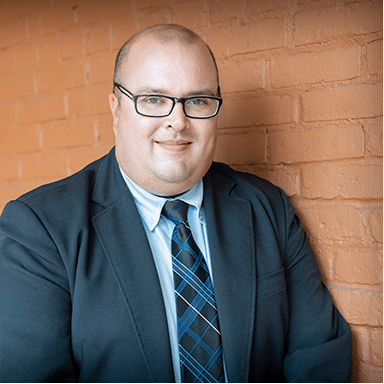Taking Care of Your Mental Hygiene as a Firefighter
 As firefighters, we spend most, if not all, of our energy and focus on helping others. We sign up to be there for others in their time of need. We even acknowledge that we may risk everything for a stranger. For some, it’s what pulls us in. But what about us? How much time do we spend taking care of ourselves or our brothers and sisters in the service?
As firefighters, we spend most, if not all, of our energy and focus on helping others. We sign up to be there for others in their time of need. We even acknowledge that we may risk everything for a stranger. For some, it’s what pulls us in. But what about us? How much time do we spend taking care of ourselves or our brothers and sisters in the service?
When we talk about scene safety, we always put ourselves first, our partners second, and then the victim(s) third. What about when we’re off duty or not on a call?
The leading cause of death for firefighters in 2019 was suicide. The staggering numbers show that more firefighters took their own lives than those who died in the line of duty. The fact that our own brothers and sisters are reaching the point where they feel taking their own lives is the only way out is nothing short of alarming.
We truly have two responsibilities when we aren’t serving those in our community. We have to be cognizant of our own mental health and well-being as well as that of our brothers and sisters. While one may think that what we should look for in ourselves and others would be the same, we couldn’t be more wrong. What we feel and experience ourselves will manifest totally differently, or not show at all, in others in our department.
Taking Care of Your Personal Mental Hygiene as a Firefighter
Let’s examine ourselves first. How do we care for our own mental hygiene, or provide psychological first aid to ourselves?
The first step is recognition. We need to recognize something isn’t normal.
- Are we not taking interest in what we used to?
- Are we sleeping more or less than normal?
- Have we become desensitized?
- Are we anxious about things we never used to be?
- Do you feel burned out?
- Have we been on a call or calls that still bother us? Have we talked about them?
- Do we feel like we are at the end of our support system?
These are all incredibly difficult questions to ask ourselves, let alone answer.
If you find it difficult to answer these questions, you are not alone. There is a multitude of resources available. The first resource is those in your department. Many times, talking with your peers can be some of the best therapy available. You may be surprised to find out that you’re not the only person going through what you are experiencing.
There are other, higher-level resources and firefighter tools to improve mental wellness available as well. Your department may have in-house Employee Assistance Programs (EAP), firefighter continuing education (CE), or other programs. Branching out, there are many other resources available to firefighters and emergency service personnel for mental health and stress management. Almost any firefighter organization has embraced firefighter mental health initiatives and offer resources, usually free of charge. Notable independent organizations are the Code Green Campaign and the Firefighter Behavioral Health Alliance. These are standalone resources dedicated to responder and firefighter mental health. (Learn about other helpful mental health resources for first responders here.)
Watching Out for Others and Changing Our Culture
What about others in our department?
- Are previously active members not showing up anymore?
- Do previously engaged members seem withdrawn?
- Are you noticing acute personality changes or mood swings in your peers?
- Was there a particular incident that precipitated these changes?
- Has their conversation or tone become more negative?
- Do they talk about what things would be like without them?
It is imperative that we be observant of any changes in our fellow department members. A simple act of reaching out to talk can truly save a life. It’s also important that you mention your concerns to trusted leaders who can connect you and them to valuable resources. Whether you are struggling yourself or are concerned for someone else, it’s important to understand you cannot and should not do this alone. Gather a support team so that you can share the load and bolster one another.
The biggest hurdle that we must overcome if we (as individuals and as an industry) want to improve is the negative stigma associated with seeking assistance with mental health. For so long the fire service mentality has been that anyone who needs mental health care is weak and that they should have known what they signed up for. This is entirely false. If this culture exists in your mind or in your department, this needs to be overcome immediately. If you are an officer or leader in your department and this culture exists, for your own good and the good of your team, this needs to be eliminated.
If you don’t know where to begin, start small. Begin by asking your team members how they are really doing. Share your own experiences. Talk often and regularly about the importance of mental health and seeking help. This cannot be a one-and-done discussion. It needs to be an ongoing, open conversation. Establish yourself as a friend and a safe place where others can come when they need help. Beginning now to create connections and good communication will help both you and others when challenges arise. As you do, you can foster a welcoming culture in your department, increase your sense of fulfillment in your job, and even experience firefighter job growth.
Embracing mental wellness should be the current cultural landscape in the fire service. Our greatest calling in the fire service is to save lives. These lives should include our own and our brothers and sisters. Do as much as you can for your mental health and that of your co-workers.
For more resources about how to build resiliency and effective department communication, view this helpful, free 30-minute webinar or see our courses on how to build resilience and take care of your mental hygiene as a firefighter and leader.
References:
Henderson S, Van Hasselt V, LeDuc T, Couwels J. Firefighter suicide: Understanding cultural challenges for mental health professionals. Professional Psychology: Research and Practice. Vol 47(3), Jun 2016, 224-230.
Wagner S, Fraess-Phillips A, Mikkelson K. Recruit firefighters: personality and mental health. International Journal of Emergency Services. 2016. Vol. 5 No. 2, pp. 199-211. https://doi.org/10.1108/IJES-08-2016-0015.
Workshops designed by a first responder for first responders. https://www.ffbha.org/.
 Jason Haag, CCEMT-P, CIC, SFI, is the Quality Assurance Analyst and Clinical Educator for MultiMed Billing in Baldwinsville, NY. He has more than 17 years of fire and EMS experience. He started as an EMT in 2003 and advanced to the Paramedic level in 2006. In 2008, Jason studied at the University of Maryland Baltimore College to obtain a certification in critical care transport. Jason worked as a CCEMT-P since 2008 and has experience transporting critically ill patients utilizing ventilators, IV pumps, advanced pharmacology, and RSI. He was an EMS supervisor from 2010 to 2018. Jason successfully earned his CIC certification and teaches for many agencies across New York. He also speaks at conferences, hosting classes and reviewing texts for Jones and Bartlett Learning. Jason continues his EMS advocacy through his active involvement with Finger Lakes Regional EMS Council, NY SEMSCO, Wayne County ALS, AHA instructing, NASEMSE, and NAEMT. His involvement with Geneva Fire Department, Boy Scouts, Masons, Rotary, and Ducks Unlimited will occupy his days after his daily family time with his wife, Jami, and son, Gavin.
Jason Haag, CCEMT-P, CIC, SFI, is the Quality Assurance Analyst and Clinical Educator for MultiMed Billing in Baldwinsville, NY. He has more than 17 years of fire and EMS experience. He started as an EMT in 2003 and advanced to the Paramedic level in 2006. In 2008, Jason studied at the University of Maryland Baltimore College to obtain a certification in critical care transport. Jason worked as a CCEMT-P since 2008 and has experience transporting critically ill patients utilizing ventilators, IV pumps, advanced pharmacology, and RSI. He was an EMS supervisor from 2010 to 2018. Jason successfully earned his CIC certification and teaches for many agencies across New York. He also speaks at conferences, hosting classes and reviewing texts for Jones and Bartlett Learning. Jason continues his EMS advocacy through his active involvement with Finger Lakes Regional EMS Council, NY SEMSCO, Wayne County ALS, AHA instructing, NASEMSE, and NAEMT. His involvement with Geneva Fire Department, Boy Scouts, Masons, Rotary, and Ducks Unlimited will occupy his days after his daily family time with his wife, Jami, and son, Gavin.



